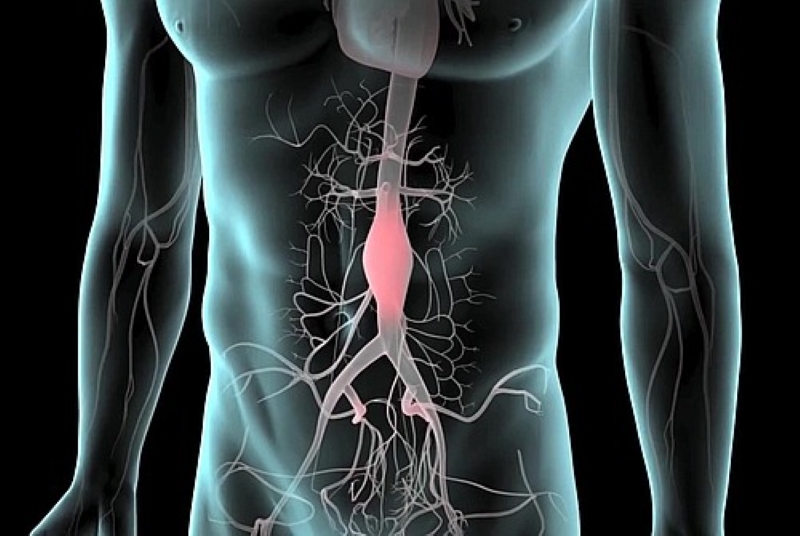
Abdominal aortic aneurysm: symptoms, evaluation and treatment
Most abdominal aortic aneurysms are asymptomatic. An aneurysm can be discovered by X-ray, computed tomography (CT) or magnetic resonance imaging (MRI) performed for other pathologies
Pain in the abdomen, chest, back or groin area is the most common symptom of an abdominal aortic aneurysm
The pain may be intense or dull.
The acute and sudden onset of severe pain in the back and/or abdomen may represent a rupture and is a life-threatening medical emergency.
An abdominal aortic aneurysm may also cause a pulsating sensation, similar to a heartbeat, in the abdomen
Assessment
Normally, vascular specialists use computed tomography angiogram (CTA) to show detailed images of our patients’ arteries.
They use these scans to choose the best therapeutic approach.
The specialists review the patients’ complete medical data to assess how an endovascular stent procedure compares to traditional surgical options or to determine whether a combined approach is necessary.
Treatments
Depending on the patient’s general health and specific condition, the specialists will recommend the most appropriate procedure.
UT’s Advanced Endovascular Aortic Programme in many Western countries focuses on the treatment of complex aortic diseases using minimally invasive total endovascular therapies.
With these devices, our vascular surgeons can repair most aortic pathologies, such as complex suprarenal and thoracoabdominal aortic aneurysms and chronic dissections, using this minimally invasive approach.
The endovascular approach to the aorta is suitable for most patients, even those who cannot undergo open surgery, ensuring a faster recovery.
If patients are suitable for an endovascular stent procedure that allows a faster recovery, the surgeon will use live X-ray images during the procedure to guide a catheter through a blood vessel to the location of the aneurysm.
Patients who are not candidates for an endovascular stent procedure may require an open repair approach.
Vascular surgeons will discuss the entire procedure with each patient and explain how traditional surgery offers the best possible treatment.
Abdominal aortic aneurysm, body veins are best for aortic grafts
A proven vascular surgery technique designed to replace infected aortic grafts with body veins has proven to be more durable and less prone to new infections than similar procedures using synthetic and cadaver grafts.
Read Also
Emergency Live Even More…Live: Download The New Free App Of Your Newspaper For IOS And Android
Aneurysm: What Is It, Symptoms, Diagnosis And Treatment
Abdominal Aortic Aneurysm: Epidemiology And Diagnosis
Abdominal Aortic Aneurysm: What It Looks Like And How To Treat It
Cerebral Aneurysm: What It Is And How To Treat It
Ruptured Aneurysms: What They Are, How To Treat Them
Pre-Hospital Ultrasound Assessment In Emergencies
Unruptured Brain Aneurysms: How To Diagnose Them, How To Treat Them
Ruptured Brain Aneurysm, Violent Headache Among The Most Frequent Symptoms
Concussion: What It Is, Causes And Symptoms
Ventricular Aneurysm: How To Recognise It?
Ischaemia: What It Is And Why It Causes A Stroke
How Does A Stroke Manifest Itself? Signs To Watch Out For
Treatment Of Urgent Stroke: Changing Guidelines? Interesting Study In The Lancet
Benedikt Syndrome: Causes, Symptoms, Diagnosis And Treatment Of This Stroke
What Is A Positive Cincinnati Prehospital Stroke Scale (CPSS)?
Foreign Accent Syndrome (FAS): The Consequences Of A Stroke Or Severe Head Trauma
Acute Stroke Patient: Cerebrovascular Assessment
Basic Airway Assessment: An Overview
Emergency Stroke Management: Intervention On The Patient
Stroke-Related Emergencies: The Quick Guide



